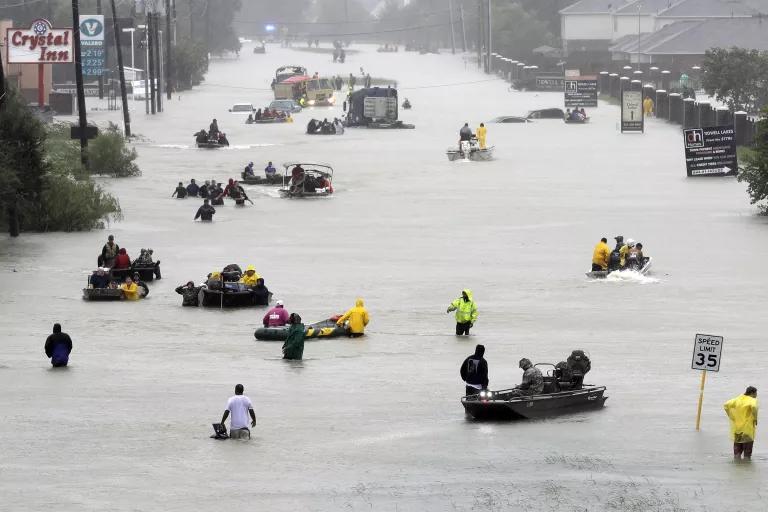Effects of Climate Change on Weather
As global temperatures climb, widespread shifts in weather systems occur, making events like droughts, hurricanes, and floods more intense and unpredictable. Extreme weather events that may have hit just once in our grandparents’ lifetimes are becoming more common in ours. However, not every place will experience the same effects: Climate change may cause severe drought in one region while making floods more likely in another.
Already, the planet has warmed 1.1 degrees Celsius (1.9 degrees Fahrenheit) since the preindustrial era began 250 years ago. And scientists warn it could reach a worst-case scenario of 4 degrees Celsius (7.2 degrees Fahrenheit) by 2100 if we fail to tackle the causes of climate change—namely, the burning of fossil fuels (coal, oil, and gas).

Tokyo during a record-breaking heat wave, August 13, 2020
The Yomiuri Shimbun via AP Images
Higher average temperatures
This change in global average temperature—seemingly small but consequential and climbing—means that, each summer, we are likely to experience increasingly sweltering heat waves. Even local news meteorologists are starting to connect strings of record-breaking days to new long-term trends, which are especially problematic in regions where infrastructure and housing have not been built with intensifying heat in mind. And heat waves aren’t just uncomfortable—they’re the leading cause of weather-related fatalities in the United States.
Longer-lasting droughts
Hotter temperatures increase the rate at which water evaporates from the air, leading to more severe and pervasive droughts. Already, climate change has pushed the American West into a severe “megadrought”—the driest 22-year stretch recorded in at least 1,200 years—shrinking drinking water supplies, withering crops, and making forests more susceptible to insect infestations. Drought can also create a positive feedback loop in which drier soil and less plant cover cause even faster evaporation.
More intense wildfires
This drier, hotter climate also creates conditions that fuel more vicious wildfire seasons—with fires that spread faster and burn longer—putting millions of additional lives and homes at risk. The number of large wildfires doubled between 1984 and 2015 in the western United States. And in California alone, the annual area burned by wildfires increased 500 percent between 1972 and 2018.

Evacuation after Hurricane Harvey in Houston, August 28, 2017
David J. Phillip/AP Photo
Stronger storms
Warmer air also holds more moisture, making tropical cyclones wetter, stronger, and more capable of rapidly intensifying. In the latest report from the Intergovernmental Panel on Climate Change (IPCC), scientists found that daily rainfall during extreme precipitation events would increase by about 7 percent for each degree Celsius of global warming, increasing the dangers of flooding. The frequency of severe Category 4 and 5 hurricanes is also expected to increase. In 2017, Hurricane Harvey, a devastating Category 4 storm, dumped a record 275 trillion pounds of rain and resulted in dozens of deaths in the Houston area.
Comments
Post a Comment